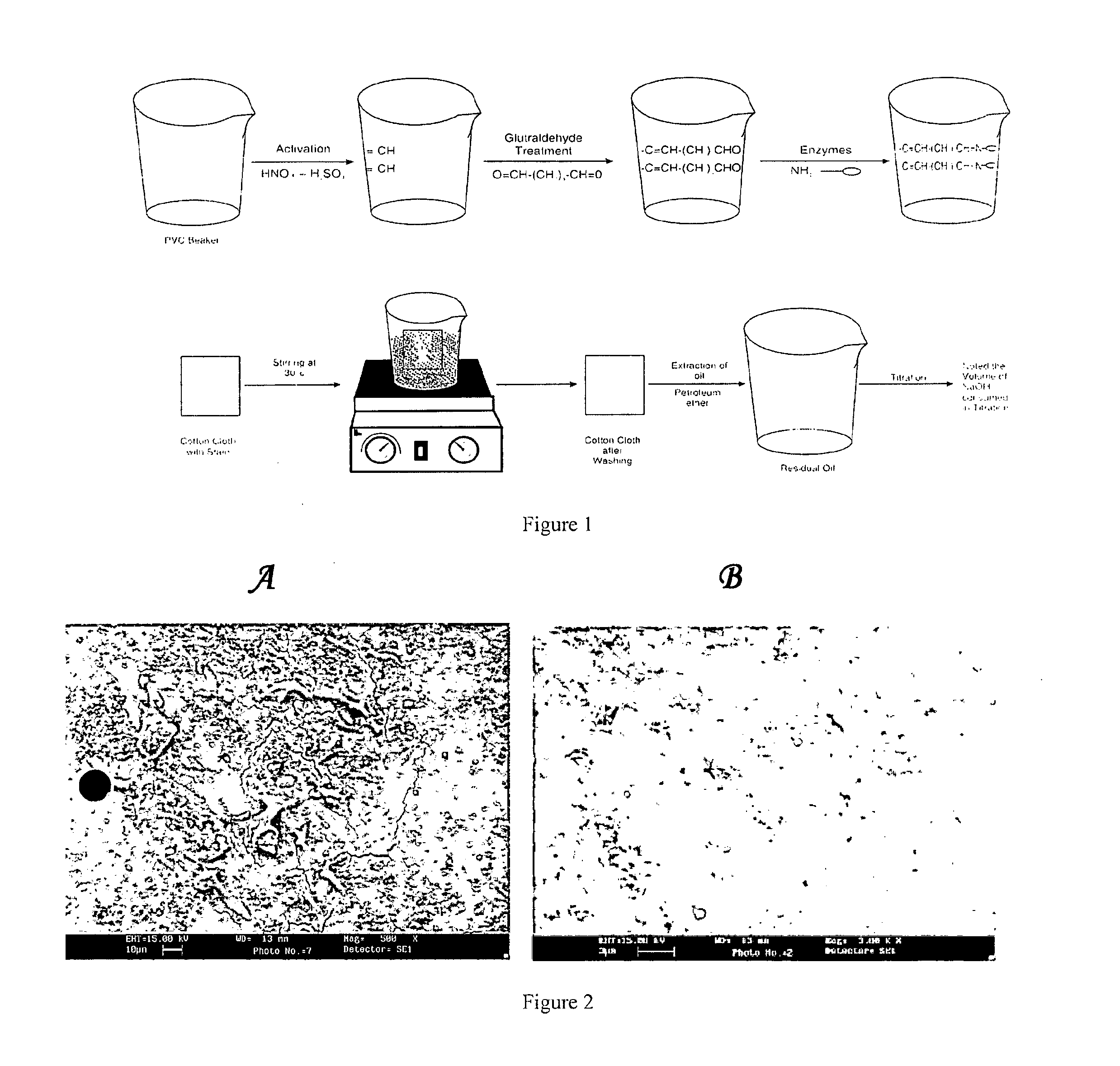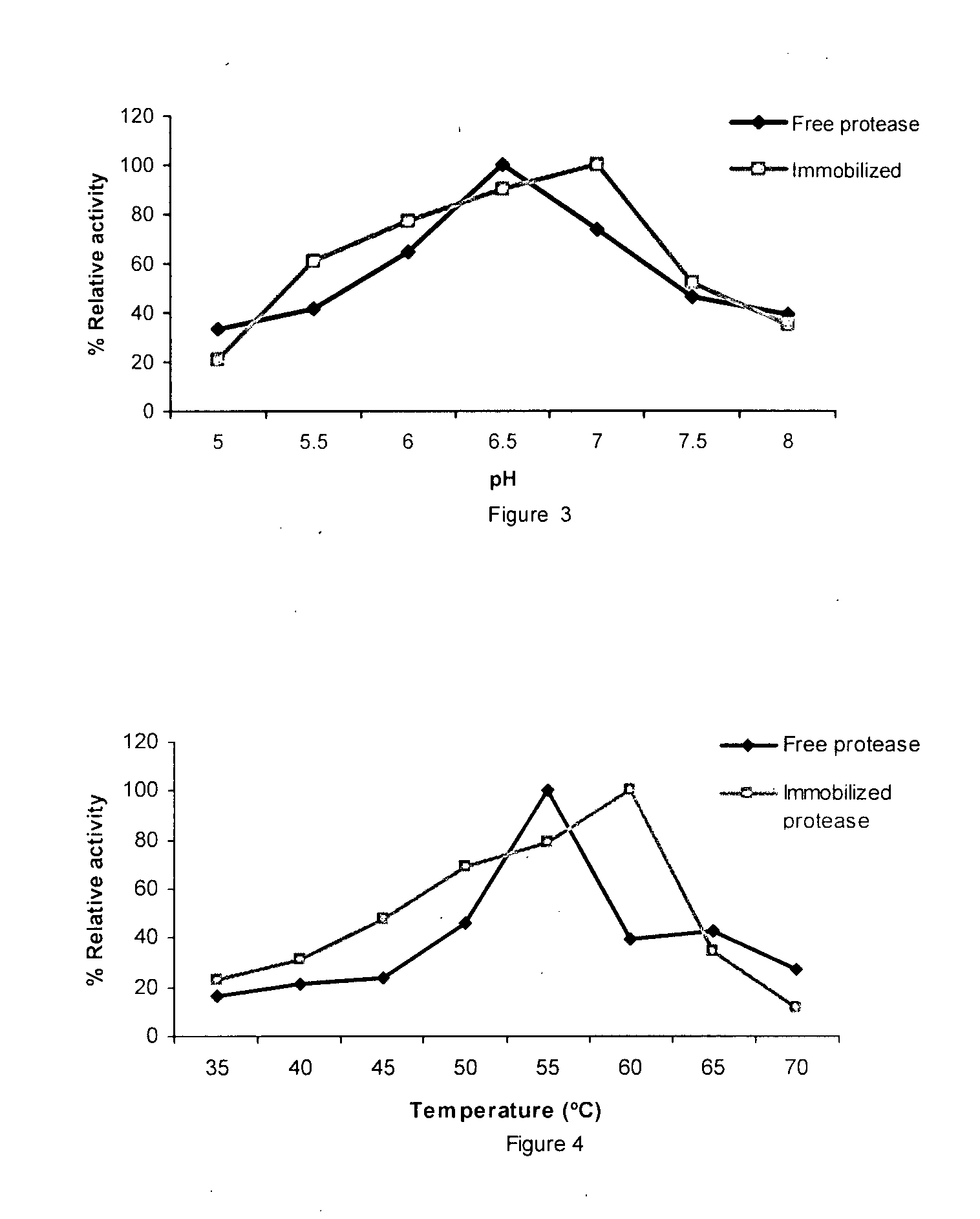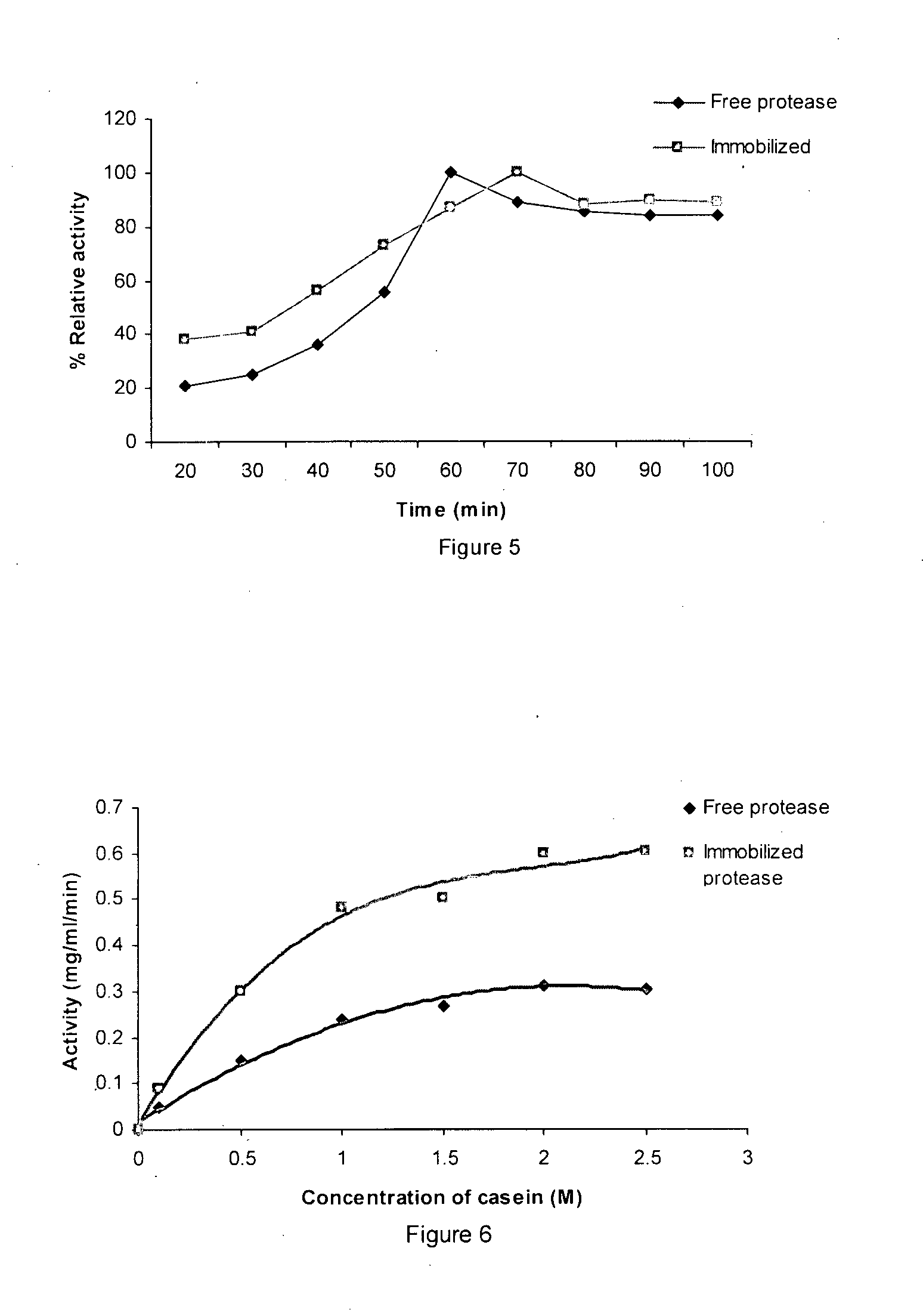Polyvinyl chloride surface co-immobilized with enzymes and uses thereof
- Summary
- Abstract
- Description
- Claims
- Application Information
AI Technical Summary
Benefits of technology
Problems solved by technology
Method used
Image
Examples
example 1
Chemicals and Reagents
[0083]Cellulase from Trichoderma viridae, α-amylase (from bacterial source), lipase from porcine pancreas (40-70 U / mg protein), sodium potassium tartarate, dinitro salicyclic acid (DNS), anthrone TCA and starch were from SISCO Research Laboratory Pvt. Ltd., Mumbai. Glutaraldehyde (25%) was from Sigma St. Louis, USA. Acetone, methanol, ethanol and phenolphthalein were from E. Merck, Mumbai. Tris-base, calcium chloride and sodium benzoate were purchased from Qualigen mumbai, Mumbai. All other chemicals were of analytical reagent grade. White PVC beaker (100 ml) and brush, commercial enzymic detergents (Surf Excel) & non enzymatic detergents (Ghari), Olive-oil and seeds of soybean (Glycine max var. Ogden) were purchased from local market. Well, canal, ground (hand pump) water collected from nearby rural region of Rohtak.
example 2
Extraction and Partial Purification of Protease from Soybean Seeds and Preparation of Crude Enzyme
Extraction
[0084]Seeds of soybean were ground to a powder in a chilled waring blender with pauses every two min. Soybean flour (100 g) was mixed in 1.0 L of chilled distilled water in a chilled blender. This filled the container to capacity and minimized foam production. The suspension was blended for 6 min with pauses at 2 min intervals to prevent overheating. The suspension was blended for 6 min with pauses at 2 min intervals to prevent overheating. The resulting suspension was centrifuged at 15,000×g for 10 min at 4° C. A thin, white oily layer was skimmed off both the supernatant and pellet were collected and tested for enzyme activity and protein content (Weil, J., et al., 1966, Cereal chem. 3:392-399). The pellet was discarded as it showed very low activity and supernatant stored at 4° C. for further studies.
[0085]The activity of protease was measured using the met...
example 3
Free Enzymes Assay
[0093]α-Amylase assay was based on measurement of glucose and maltose generated from hydrolysis of starch by α-amylase using DNS reaction. To 1.9 ml 0.05 M acetate buffer (pH −5.6) containing 2% starch in a test tube, 0.1 ml of enzyme solution was added. For blank, 2 ml reaction buffer containing 2% starch was taken in a test tube. Both blank and assay tubes were incubated at 37° C. under continuous stirring in a water bath. After incubation for 10 min, 0.1 ml 2N NaOH and 0.9 ml dinitro salicylic acid (DNS) reagent was added to both the test tubes. The test tubes were placed in boiling water bath for 5 min, cooled to room temperature and A540 of red colour was read and the amount of glucose generated in reaction was extrapolated from standard curve between glucose concentration and A540.
[0094]The assay of cellulase was based on the measurement of glucose generated from hydrolysis of cellobiose by cellulase using DNS reaction. To ...
PUM
 Login to View More
Login to View More Abstract
Description
Claims
Application Information
 Login to View More
Login to View More - R&D
- Intellectual Property
- Life Sciences
- Materials
- Tech Scout
- Unparalleled Data Quality
- Higher Quality Content
- 60% Fewer Hallucinations
Browse by: Latest US Patents, China's latest patents, Technical Efficacy Thesaurus, Application Domain, Technology Topic, Popular Technical Reports.
© 2025 PatSnap. All rights reserved.Legal|Privacy policy|Modern Slavery Act Transparency Statement|Sitemap|About US| Contact US: help@patsnap.com



